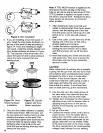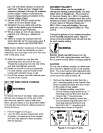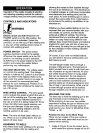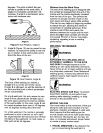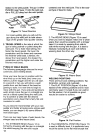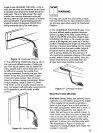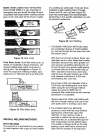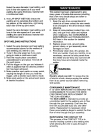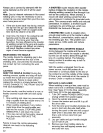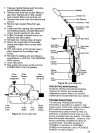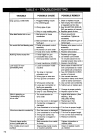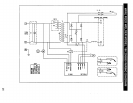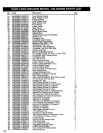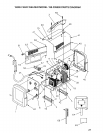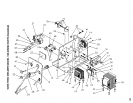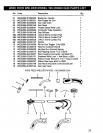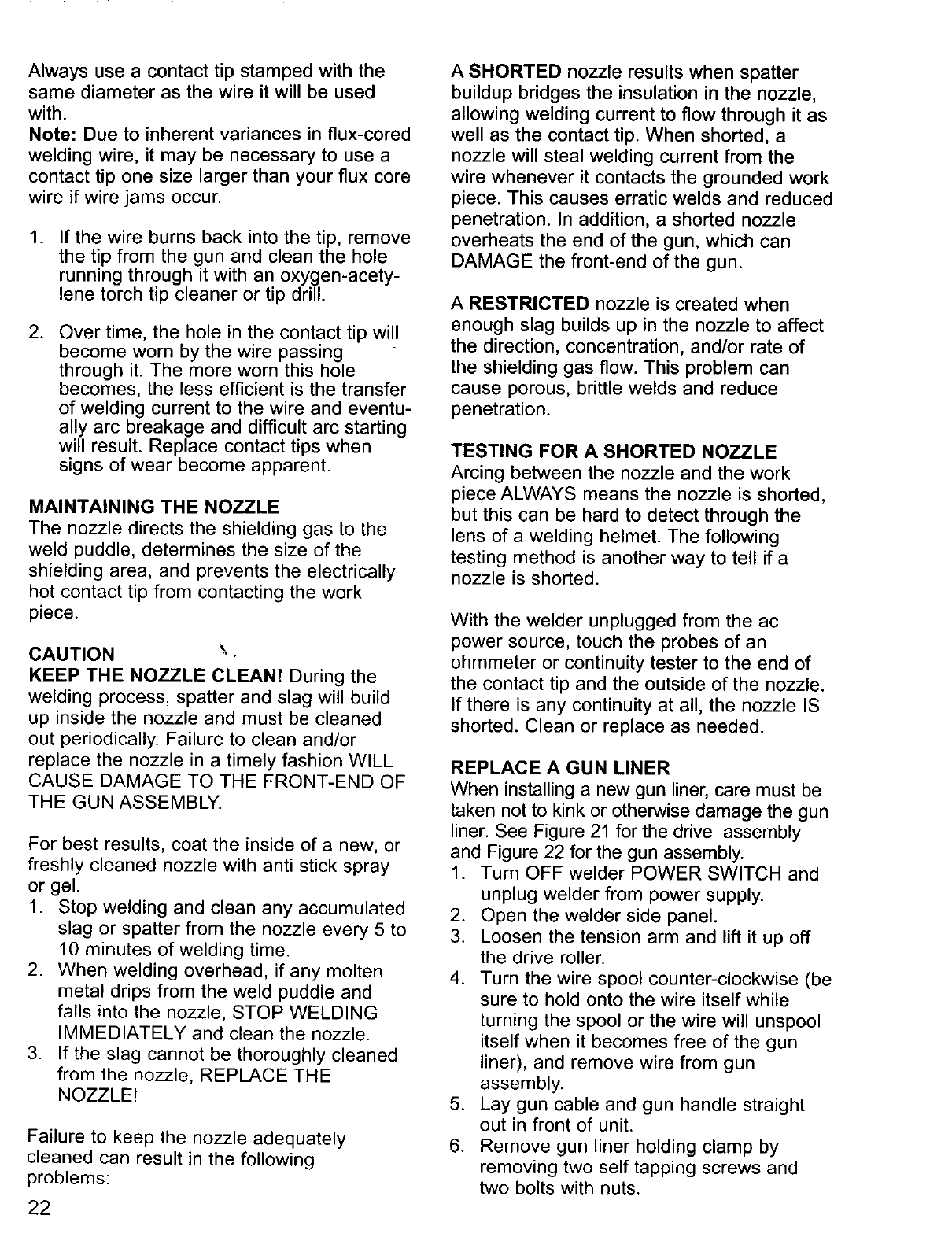
Always use a contact tip stamped with the
same diameter as the wire it will be used
with.
Note: Due to inherent variances in flux-cored
welding wire, it may be necessary to use a
contact tip one size larger than your flux core
wire if wire jams occur.
.
If the wire burns back into the tip, remove
the tip from the gun and clean the hole
running through it with an oxygen-acety-
lene torch tip cleaner or tip drill.
.
Over time, the hole in the contact tip will
become worn by the wire passing
through it. The more worn this hole
becomes, the less efficient is the transfer
of welding current to the wire and eventu-
ally arc breakage and difficult arc starting
will result. Replace contact tips when
signs of wear become apparent.
MAINTAINING THE NOZZLE
The nozzle directs the shielding gas to the
weld puddle, determines the size of the
shielding area, and prevents the electrically
hot contact tip from contacting the work
piece.
CAUTION \.
KEEP THE NOZZLE CLEAN! During the
welding process, spatter and slag will build
up inside the nozzle and must be cleaned
out periodically. Failure to clean and/or
replace the nozzle in a timely fashion WILL
CAUSE DAMAGE TO THE FRONT-END OF
THE GUN ASSEMBLY.
For best results, coat the inside of a new, or
freshly cleaned nozzle with anti stick spray
or gel.
1. Stop welding and clean any accumulated
slag or spatter from the nozzle every 5 to
10 minutes of welding time.
2. When welding overhead, if any molten
metal drips from the weld puddle and
falls into the nozzle, STOP WELDING
IMMEDIATELY and clean the nozzle.
3. If the slag cannot be thoroughly cleaned
from the nozzle, REPLACE THE
NOZZLE!
Failure to keep the nozzle adequately
cleaned can result in the following
problems:
22
A SHORTED nozzle results when spatter
buildup bridges the insulation in the nozzle,
allowing welding current to flow through it as
well as the contact tip. When shorted, a
nozzle will steal welding current from the
wire whenever it contacts the grounded work
piece. This causes erratic welds and reduced
penetration. In addition, a shorted nozzle
overheats the end of the gun, which can
DAMAGE the front-end of the gun.
A RESTRICTED nozzle is created when
enough slag builds up in the nozzle to affect
the direction, concentration, and/or rate of
the shielding gas flow. This problem can
cause porous, brittle welds and reduce
penetration.
TESTING FOR A SHORTED NOZZLE
Arcing between the nozzle and the work
piece ALWAYS means the nozzle is shorted,
but this can be hard to detect through the
lens of a welding helmet. The following
testing method is another way to tell if a
nozzle is shorted.
With the welder unplugged from the ac
power source, touch the probes of an
ohmmeter or continuity tester to the end of
the contact tip and the outside of the nozzle.
If there is any continuity at all, the nozzle IS
shorted. Clean or replace as needed.
REPLACE A GUN LINER
When installing a new gun liner, care must be
taken not to kink or otherwise damage the gun
liner. See Figure 21 for the drive assembly
and Figure 22 for the gun assembly.
1. Turn OFF welder POWER SWITCH and
unplug welder from power supply.
2. Open the welder side panel.
3. Loosen the tension arm and lift it up off
the drive roller.
4. Turn the wire spool counter-clockwise (be
sure to hold onto the wire itself while
turning the spool or the wire will unspool
itself when it becomes free of the gun
liner), and remove wire from gun
assembly.
5. Lay gun cable and gun handle straight
out in front of unit.
6. Remove gun liner holding clamp by
removing two self tapping screws and
two bolts with nuts.



